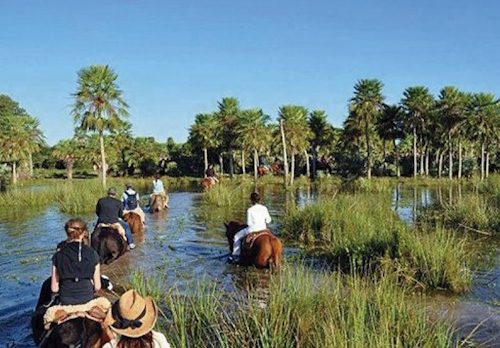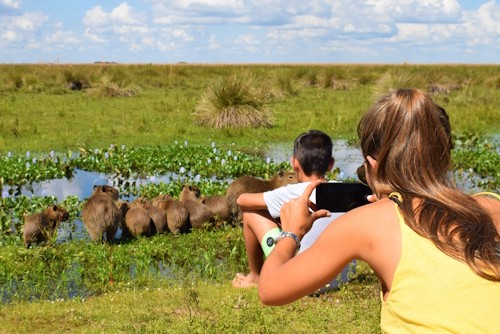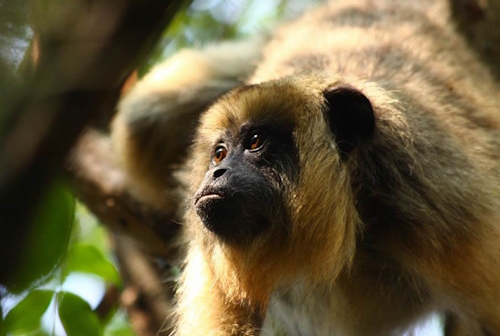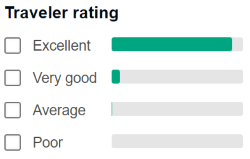Esteros de Ibera – The Everglades of Argentina!
Not many of you will have heard of the Esteros de Ibera region, and that is very understandable. I have been working in Latin American tourism for over 20 years, living between Peru, Chile and Argentina and I hadn’t heard of these huge wetlands until I was invited to visit by our local operator. South and Central America have so much to offer that the blind spot in North-eastern Argentina is somewhat excusable. But saying that, this is in fact the second-largest wetland in the world!
The investigation trip I was invited on was a combination of Iguazu Falls and the Ibera wetlands and while I already knew plenty about the majestic Iguazu, as it is a top seller for us, I knew nothing about the wetlands, and I was not disappointed with either the place itself or the accommodation options open to visitors. We were also shown some Jesuit missions and the tea and flower-producing regions nearby, so all in all the area offers plenty to see and do.
Let’s leave the impressive wildlife to one side for a moment, it was actually the living culture that really stood out for me, which was a complete surprise. I have been all over the continent and have enjoyed activities with the “cowboys” of South America, the Gauchos in Argentina and the Huasos of Chile. Inevitably many of these experiences are tailored for tourists and, although entertaining, can feel a little staged. In contrast, the Gauchos we spent time with in Esteros de Ibera seemed very authentic and natural.


For one thing, they were not very well turned out, to say the least, indeed they were often unwashed (at least for “Western standards”, smelled very strongly of livestock, spoke in a very particular way and were generally rustic. Something I will never forget is that one day we were out riding, and I was at the back as usual, as the least enthusiastic rider, when I spotted what seemed to be a calf standing by what I assumed to have been its dead mother.
I shouted to the Gaucho leading the line of riders and he circled back, confirming that the mother was in fact recently dead. he matter-of-factly said, “OK let’s sort this out”. He lifted the small calf (which was obviously still very heavy) onto his shoulders and got back on his horse, re-positioned the animal, and we rode back to the ranch. The animal may have ended up on the BBQ after several months or years but at least it didn’t die right there in the field.
Now let’s talk about wildlife. It is everywhere you look. You can walk around the wetlands (where trails will let you of course), or go out on horseback or in boats. Boats can be motor powered, which obviously presents some advantages and disadvantages, or the boats may be pulled by horses. Some modes of transport will allow you to get very close to some species, for example, you can very close to Cayman in boats. As you can see in the photo below you can also get very close to the Capibara (or Carpinchos), which are the world’s largest rodents, as they are extremely tame and group together on the banks of the lakes.


Created in 2018 this new National Park enjoys certain protections and as a result, the populations of flora and fauna are on the increase again. This area is set to be very important in the future not only for generating tourism dollars but even more importantly as a store of biodiversity. Currently, the place is home to over 360 species of bird and many previously endangered birds and mammals such as the marsh deer, giant river otter, and several species of macaw are recovering. There are also plans to reintroduce many locally extinct or endangered native species, such as the giant anteater, collared peccary, the bare-faced Currosaw (a type of impressive Pheasant) and also pampas deer.
There are several points of access to the area, with a wide range of accommodation types which offer a choice of travel style and budget level to keep everyone happy. The logistics are not absolutely straightforward but we handle that anyway. That is part of the charm of this lovely place, as many foreign visitors will never think of including it in their schedule. You can combine Esteros de Ibera with Iguazu Falls and the other attractions we mention, in combination with other destinations in Argentina. There are superb flight connections between Buenos Aires, Iguazu and Salta, providing fast connections to other parts of South America and the wider world.


